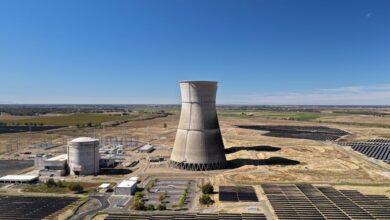The Double-Edged Sword of the Expiring EV Tax Credit

The world of high finance and cutting-edge technology often throws up paradoxes that make you scratch your head. For a company as scrutinized and celebrated as Tesla, these moments feel particularly amplified. Case in point: a recent quarter where the electric vehicle giant reported record-breaking deliveries. You’d think this would send profits soaring, right? A clear sign of market dominance and robust health. Yet, the reality painted a starkly different picture: Tesla’s profit actually tumbled a surprising 37% compared to the same period last year. It’s a classic business conundrum – selling more, but earning less. So, what exactly is going on under the hood of this automotive titan?
The Double-Edged Sword of the Expiring EV Tax Credit
One of the most immediate factors contributing to Tesla’s sales surge, and perhaps inadvertently, its profit squeeze, was the looming deadline for the federal EV tax credit. As the year-end approached, many prospective buyers hurried to finalize their purchases, eager to take advantage of the full credit before it was significantly reduced or altered. This created a powerful, albeit temporary, incentive that fueled a rush on Tesla showrooms.
Think of it like a massive “end-of-season” sale, but driven by government policy rather than a store’s marketing department. Consumers, naturally, respond to financial benefits. This accelerated demand meant a significant uptick in vehicles moving off lots. While fantastic for delivery numbers, this kind of induced demand often comes with caveats. Did Tesla have to push vehicles harder, perhaps with less lucrative configurations, or even slight price adjustments in certain markets to capitalize on the expiring credit? It’s a fair question to ask when the volume goes up, but the bottom line dips.
Meeting this sudden surge in demand also comes with its own set of operational challenges and potential cost increases. Ramping up logistics, delivery, and customer service to handle a peak period can strain resources. While economies of scale usually kick in with higher production, if that scale is achieved under pressure or with less-than-optimal pricing, the per-unit profit can still suffer. It’s a delicate balancing act between maximizing volume and preserving margin.
Unpacking the 37% Profit Plunge: More Than Just Tax Credits
While the expiring tax credit certainly played a role in the sales rush, it doesn’t fully explain a 37% drop in profit. This substantial decline points to deeper, more systemic pressures that Tesla is currently navigating. One of the most significant factors, and one that has been a recurring theme in recent quarters, is price cuts.
The Price War and Margin Compression
Tesla has been engaged in an aggressive price war globally, cutting prices across its lineup multiple times over the past year. This strategy is multi-faceted: it aims to boost market share, put pressure on competitors, and make EVs more accessible to a wider audience. In a rapidly maturing EV market, where traditional automakers are finally bringing credible challengers to market, maintaining competitive pricing is crucial.
However, lowering prices, even if it drives volume, directly impacts profit margins. If the cost to produce each vehicle doesn’t fall proportionally, then the profit generated per sale naturally shrinks. This is a classic trade-off in many industries: do you prioritize market share and growth at the expense of immediate profitability, or vice-versa? For Tesla, it appears they’ve leaned heavily into the former, betting that a larger installed base and broader market penetration will pay dividends down the line, particularly with their ambitions in software and services.
R&D, Production Ramp-Ups, and Competition
Beyond pricing, increased operating expenses are another piece of the puzzle. Tesla isn’t sitting still. They are investing heavily in future growth, which includes significant expenditure on research and development for upcoming products like the Cybertruck and the next-generation platform. Ramping up production at new facilities like Giga Texas and Giga Berlin, while essential for future capacity, also incurs substantial initial costs before achieving full efficiency.
Furthermore, the competitive landscape has fundamentally shifted. When Tesla first emerged, it had the premium EV market largely to itself. Today, nearly every major automaker has a compelling EV offering, from luxury sedans to practical SUVs. This increased competition means Tesla can no longer command the same premium pricing with as much ease. They have to work harder, and sometimes sell for less, to maintain their lead in an increasingly crowded arena.
The Long Game: Strategy Amidst Short-Term Volatility
So, should investors and enthusiasts be concerned by this paradox of high sales and low profits? It depends on your perspective and time horizon. From a purely short-term, quarterly earnings viewpoint, yes, it’s a dip. But for a company like Tesla, which has always played a long game, these fluctuations might be viewed as strategic trade-offs.
Elon Musk and his team have often prioritized growth, technological advancement, and market disruption over immediate, maximized profits. The current strategy appears to be about solidifying Tesla’s position as the dominant force in electric vehicles globally, even if that means temporarily sacrificing some margin. By lowering prices, they make their vehicles accessible to more people, accelerating the world’s transition to sustainable energy – a core mission. This also grows their installed base, which is crucial for future revenue streams like Full Self-Driving (FSD) software and other services, which are inherently high-margin.
Moreover, the investments in new factories and R&D are not about today’s profits, but tomorrow’s. The Cybertruck, the Optimus robot, and advancements in battery technology are all costly endeavors now, but could be massive revenue generators in the future. It’s a classic reinvestment cycle: generate revenue, funnel it back into innovation and expansion, and hope for exponential returns down the line. It’s a high-stakes gamble, but one that has historically paid off for Tesla.
Conclusion: The Ever-Evolving Road Ahead for Tesla
Tesla’s recent financial results are a powerful reminder that in the fast-paced world of technology and automotive innovation, headline numbers rarely tell the full story. A record sales quarter, seemingly a triumph, can mask underlying pressures and strategic decisions that impact profitability. The expiring EV tax credit certainly provided a temporary boost to sales, but the deeper profit decline points to the ongoing price war, significant investments in future growth, and the maturing competitive landscape of the EV market.
For Tesla, this isn’t just about selling cars; it’s about shaping an industry, transitioning to sustainable energy, and constantly pushing the boundaries of technology. The company is actively choosing to prioritize market share and long-term strategic positioning over immediate margin maximization. Whether this strategy will continue to yield the explosive growth and profitability investors have come to expect remains the central question. The road ahead for Tesla, much like its groundbreaking vehicles, is undoubtedly complex, electric, and always evolving.





